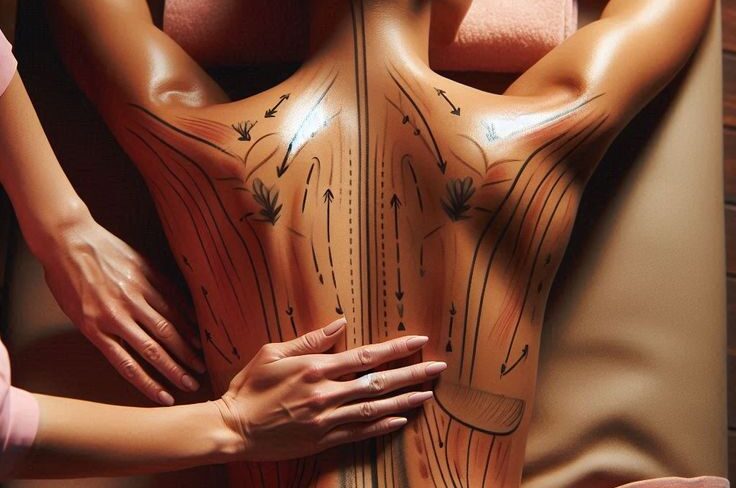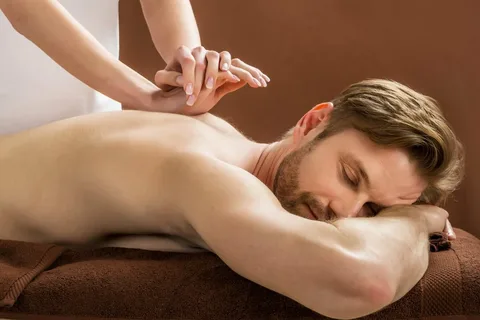Understanding Muscle and Joint Pain
Muscle and joint pain can arise from various causes, including injury, overuse, medical conditions, or stress. Common conditions associated with muscle and joint pain include:
-
Arthritis: Inflammation of the joints that can lead to pain and stiffness.
-
Tendinitis: Inflammation of the tendons, often due to repetitive motion.
-
Fibromyalgia: A chronic condition characterized by widespread musculoskeletal pain.
-
Muscle Strains: Overstretching or tearing of muscle fibers due to excessive force or overuse.
Understanding the nature of your pain is essential for effective management.
The Role of Massage in Pain Management
Massage therapy involves the manipulation of soft tissues in the body to promote relaxation, improve circulation, and alleviate pain. Various techniques can be employed, each with specific benefits. Here’s how massage can help manage muscle and joint pain:
1. Improved Circulation
Massage therapy increases blood flow to the affected areas, delivering essential nutrients and oxygen to the tissues. Improved circulation can help reduce inflammation and promote healing, making it an effective treatment for both acute and chronic pain.
2. Muscle Relaxation
One of the primary benefits of massage is its ability to relax tight and tense muscles. By reducing muscle tension, massage can alleviate pressure on joints and improve overall mobility. This relaxation can lead to decreased pain levels and enhanced range of motion.
3. Endorphin Release
Massage therapy stimulates the release of endorphins, the body’s natural painkillers. These hormones interact with the receptors in your brain to reduce the perception of pain, promoting a sense of well-being and relaxation.
4. Reduced Stress and Anxiety
Chronic pain often leads to increased stress and anxiety, creating a vicious cycle. Massage therapy helps reduce stress levels by promoting relaxation and enhancing mental clarity. This reduction in stress can further contribute to pain relief.
5. Improved Flexibility and Range of Motion
Regular massage therapy can improve flexibility and range of motion in the muscles and joints. Enhanced mobility can help individuals perform daily activities with greater ease, reducing the likelihood of pain flare-ups.
Types of Massage Techniques for Pain Relief
Different massage techniques can target specific areas of pain and provide relief. Here are some popular types of massage that are particularly effective for managing muscle and joint pain:
1. Swedish Massage
Swedish massage is a gentle, full-body technique that promotes relaxation and improves circulation. It involves long, flowing strokes and kneading, making it an excellent choice for overall muscle relaxation and pain relief.
2. Deep Tissue Massage
Deep tissue massage focuses on deeper layers of muscle and connective tissue. This technique is particularly beneficial for chronic pain and muscle tension, as it targets specific areas of discomfort and breaks down adhesions and scar tissue.
3. Trigger Point Therapy
Trigger point therapy targets specific points in the muscles that are sensitive and can cause referred pain. By applying pressure to these trigger points, the therapist can release tension and alleviate pain in other areas of the body.
4. Myofascial Release
Myofascial release focuses on releasing tension in the fascia, the connective tissue surrounding muscles. This technique can improve flexibility and alleviate pain associated with conditions like fibromyalgia and chronic muscle tension.
5. Sports Massage
Sports massage is designed for athletes and active individuals. It incorporates techniques that prepare the muscles for activity, relieve soreness, and aid in recovery. This type of massage can help prevent injuries and manage pain effectively.
6. Hot Stone Massage
Hot stone massage involves the use of heated stones placed on specific points of the body. The heat helps relax muscles and improves circulation, providing deep relief for muscle and joint pain.

How to Choose the Right Massage Therapist
Finding the right massage therapist is crucial for effective pain management. Here are some tips to help you choose the best therapist for your needs:
1. Check Credentials
Ensure that the massage therapist is licensed and certified. Look for someone with specialized training in pain management techniques or specific modalities that suit your condition.
2. Ask About Experience
Inquire about the therapist’s experience with clients suffering from muscle and joint pain. A therapist with a background in treating similar conditions will be better equipped to address your specific needs.
3. Read Reviews
Look for reviews or testimonials from previous clients. Positive feedback can indicate a therapist’s effectiveness and ability to provide relief.
4. Discuss Your Needs
Before starting treatment, have an open discussion with the therapist about your pain, any medical conditions, and your treatment goals. This conversation will help tailor the massage to your specific needs.
5. Trust Your Instincts
Comfort is key in a therapeutic relationship. Choose a therapist with whom you feel at ease, as this will enhance your overall experience and treatment effectiveness.
Incorporating Massage into Your Pain Management Plan
While massage therapy can be a powerful tool for managing muscle and joint pain, it’s essential to incorporate it into a comprehensive pain management plan. Here are some tips for effective integration:
1. Combine Treatments
Consider combining massage therapy with other treatments, such as physical therapy, chiropractic care, or medication. A multidisciplinary approach can enhance overall pain management.
2. Set a Regular Schedule
Regular massage sessions can provide ongoing benefits. Work with your therapist to establish a schedule that meets your needs, whether it’s weekly, bi-weekly, or monthly.
3. Practice Self-Care
In addition to professional massage, consider self-massage techniques or using tools like foam rollers to relieve tension between sessions. Incorporate stretching and gentle exercises to maintain flexibility and strength.
4. Listen to Your Body
Pay attention to how your body responds to massage and other treatments. If you experience discomfort or increased pain, communicate with your therapist and adjust your plan accordingly.
5. Stay Hydrated
Drinking water after a massage is crucial for flushing out toxins released during the session. Proper hydration can aid in recovery and enhance the benefits of massage.
Conclusion
Massage therapy is a valuable tool for managing muscle and joint pain, offering a range of benefits that can enhance your quality of life. From improved circulation and relaxation to the release of endorphins, massage provides a holistic approach to pain relief. By exploring different techniques and finding the right therapist, you can effectively incorporate massage into your pain management plan. Don’t let muscle and joint pain control your life—consider massage therapy as a proactive step towards a more comfortable and fulfilling existence.











